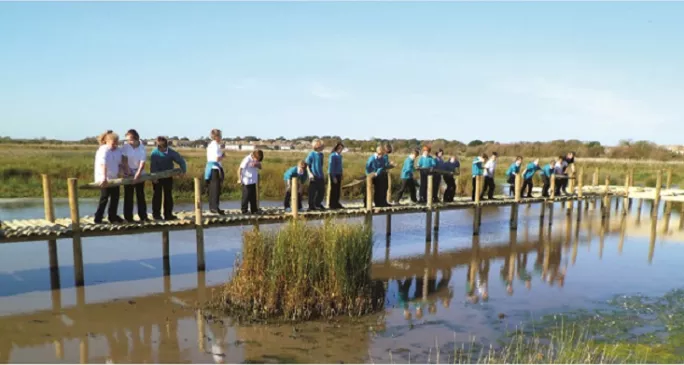How to teach creatively and still get a good Ofsted rating
There can’t be many schools that would invite Ofsted inspectors to meditate in a Mongolian yurt or join a class of eight-year-olds to round up some water buffalo. And with good reason: the general consensus is that Ofsted would hate that sort of thing. Yet Mike Fairclough, headteacher of West Rise Junior School in Eastbourne, East Sussex, did just that.
“The inspection was carried out under the latest rigorous criteria, within an educational climate that critics were describing as restrictive and Victorian,” writes Fairclough in the 24 October issue of TES.
“But we are unconventional to say the least. We have water buffalo, sheep, pigs, chickens, ducks and cows roaming a 120-acre area of wetland that is opposite the school. On this land, we teach the children to fire shotguns, practise archery, hunt with gun dogs and ferrets and master fly fishing.”
The school also teaches pupils to light fires and use knives. Some have even skinned rabbits and plucked pigeons, and most know how to cook over an open fire.
Far from recoiling in horror at all this out-of-class activity, inspectors fully embraced the unusual educational experience. West Rise was awarded a rating of good with outstanding features and Fairclough argues that this proves other schools should get over the assumption that Ofsted is against creative approaches to education.
“A creative approach to teaching and learning is something that Ofsted loves,” he writes. “You can be creative and still meet the requirements.”
This is obviously easier said than done. To be able to offer the activities he provides for students, Fairclough has to put the curriculum at the heart of every initiative. And when Ofsted comes, he says, you have to show them it works.
“The key for us, every time, has been to present the inspectors with evidence that what we do benefits the children,” he writes. “This is achieved through careful and accurate data analysis. We are able to demonstrate that our provision, from the arts through to the animals and Bronze Age activities, has a direct impact on standards across the curriculum.”
Fairclough does a number of other things to show the inspectors his approach works (detailed in the full feature) and, though it sounds like a lot of extra work, he says the rewards are significant both in terms of pupil attainment and experience.
“If you believe that a creative approach to teaching and learning helps children to access the curriculum and make progress, there is no reason not to forge ahead,” he writes. “If you can show accurate evidence, inspectors will be delighted to see fresh approaches and the positive impact they have on learning.”
Read the full article in the 24 October edition of TES on your tablet or phone or by downloading the TES Reader app for Android or iOS. Or pick it up at all good newsagents.
Keep reading for just £1 per month
You've reached your limit of free articles this month. Subscribe for £1 per month for three months and get:
- Unlimited access to all Tes magazine content
- Exclusive subscriber-only stories
- Award-winning email newsletters




